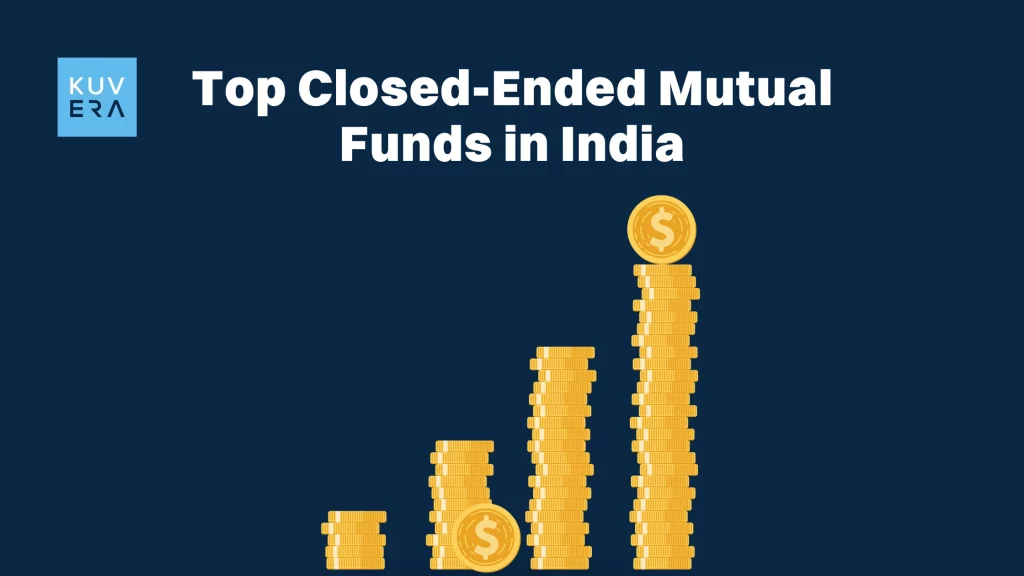Closed-ended mutual funds India are investment funds that issue a fixed number of shares or units to investors during the initial offering, known as the New Fund Offer (NFO). After the NFO closes, no new units are issued, and existing units cannot be redeemed directly with the fund at the investor’s discretion. This structure offers unique opportunities and challenges for investors.
Difference Between Closed-Ended and Open-Ended Mutual Funds
While both closed-ended and open-ended mutual funds pool investor money and invest in a diversified portfolio of assets, key differences exist in how they operate and the investor experience.
| Sr.No. | Features | Closed-Ended Mutual Funds | Open-Ended Mutual Funds |
|---|---|---|---|
| 1 | Issuance of Units | Fixed number of units issued during the NFO. No further issuance after the NFO period. | Units are issued and redeemed on an ongoing basis. |
| 2 | Liquidity | Liquidity depends on the secondary market (stock exchange). It cannot be redeemed directly from the fund. | Liquidity is high as investors can redeem or buy units directly from the fund anytime. |
| 3 | Redemption | Investors can only redeem units after the maturity date. They can only sell in the secondary market. | Investors can redeem units directly from the fund at the prevailing NAV. |
| 4 | Investment Horizon | Generally, closed-ended funds have a fixed maturity period (3-10 years or more). | There is no fixed maturity period. It can be held for the long term or redeemed at any time. |
| 5 | Pricing of Units | Units trade at market prices on the stock exchange, which may be higher or lower than the NAV. | The NAV determines the buying and selling price of units and is updated daily. |
| 6 | Fund Management | Managed actively with a focus on long-term capital appreciation. | Actively or passively managed, focusing on meeting the fund's stated investment objective. |
| 7 | Flexibility for Investors | It is less flexible as units can only be bought or sold on the exchange. | More flexible with daily transactions, allowing investors to buy or sell units as needed. |
| 8 | Suitability | Suitable for long-term investors who do not require immediate liquidity and are comfortable with market-based pricing. | Suitable for investors seeking liquidity and the ability to enter or exit the fund quickly. |
Advantages of Closed-Ended Mutual Funds
1. Long-Term Investment Focus
Closed-ended funds are designed with a fixed number of shares, meaning they do not face redemption pressure from investors. This allows the fund manager to follow a long-term investment strategy, focusing on sustainable growth without managing frequent inflows or outflows. This can lead to potentially better performance over time.
2. Market-Driven Pricing
Closed-ended funds are listed on the stock exchange, so their prices are determined by market forces rather than their net asset value (NAV). This means investors have the opportunity to purchase shares at a discount to NAV during market fluctuations, which can be an advantage in certain market conditions.
3. Portfolio Stability
Because closed-ended funds do not require constant inflows and outflows from investors, the fund’s portfolio can remain more stable. This stability allows the fund manager to focus on achieving long-term goals without the disruption caused by frequent redemptions or the need to hold liquid assets.
4. Opportunity for Capital Appreciation
These funds often hold investments for longer periods and are not pressured to sell assets to meet investor redemption requests. This focus on long-term growth can lead to capital appreciation opportunities for investors looking for a sustained increase in the value of their investment.
5. Access to Niche Investment Strategies
Closed-ended funds may provide access to unique or niche investment strategies not typically available in open-ended funds. This can attract investors seeking exposure to specialised sectors or asset classes that require a longer investment horizon or greater expertise.
Disadvantages of Closed-Ended Mutual Funds
1. Liquidity Risks
The liquidity of closed-ended funds depends on the secondary market; in some cases, the market for these units may be illiquid. This can make buying or selling shares at a favourable price challenging. Investors may be forced to sell at a discount to NAV or, in extreme cases, be unable to sell their units.
2. Pricing May Differ from NAV
The market price of closed-ended fund units can fluctuate significantly, often trading at a premium or discount to the NAV. This disparity can lead to potential losses if an investor buys shares at a premium and sells them at a discount.
3. No Redemption Facility
Unlike open-ended funds, closed-ended funds do not offer a redemption option, meaning investors cannot redeem their units directly from the fund before the maturity date. This lack of liquidity may be a disadvantage for those who require access to their funds on short notice.
4. Maturity Risk
Closed-ended funds often have a fixed maturity period, which may not align with the needs of all investors. Those who seek more flexibility in terms of investment duration might find this structure limiting.
Top Closed-Ended Mutual Funds in India
| Scheme Name | Benchmark | 3-Year Return (%) | 3-Year Benchmark Return (%) | Daily AUM (₹ in cr) |
|---|---|---|---|---|
| Sundaram Long Term Tax Advantage Fund Series III | BSE 500 Total Return Index | 23.62 | 16.87 | 36.70 |
| Sundaram Long Term Tax Advantage Fund Series IV | BSE 500 Total Return Index | 23.44 | 16.87 | 23.49 |
| ICICI Prudential Long-Term Wealth Enhancement Fund | NIFTY 500 Total Return Index | 23.29 | 16.89 | 42.59 |
| Sundaram Long Term Micro Cap Tax Advantage Fund Series III | NIFTY Smallcap 100 Total Return Index | 22.89 | 21.63 | 84.05 |
| Sundaram Long Term Micro Cap Tax Advantage Fund Series VI | NIFTY Smallcap 100 Total Return Index | 22.88 | 21.63 | 39.76 |
| Sundaram Long Term Micro Cap Tax Advantage Fund Series IV | NIFTY Smallcap 100 Total Return Index | 22.84 | 21.63 | 39.05 |
| SBI Long Term Advantage Fund Series III | BSE 500 Total Return Index | 22.45 | 16.87 | 79.26 |
| Sundaram Long Term Micro Cap Tax Advantage Fund Series V | NIFTY Smallcap 100 Total Return Index | 22.19 | 21.63 | 33.48 |
| SBI Long Term Advantage Fund Series VI | BSE 500 Total Return Index | 21.48 | 16.87 | 302.40 |
| SBI Long Term Advantage Fund Series I | BSE 500 Total Return Index | 21.16 | 16.87 | 53.87 |
Source: AMFI
Who Should Invest in Closed-Ended Mutual Funds?
1. Long-Term Investors
Investors willing to commit capital for an extended period and do not need immediate liquidity can benefit from the long-term strategies employed by closed-ended funds.
2. Niche Investments
Those looking for specialised or thematic funds with a targeted investment focus may find closed-ended funds appealing.
3. Discount Buying Opportunity
Investors who can tolerate the potential liquidity risks may look for opportunities where closed-ended fund units trade at a discount to NAV, which could lead to higher returns when the discount narrows.
Wrapping Up
Closed-ended mutual funds in India offer unique investment opportunities, particularly for long-term investors seeking stability and long-term capital appreciation. However, they come with distinct risks, especially liquidity and pricing fluctuations. Understanding the characteristics of these funds and aligning them with financial goals and risk tolerance is essential before making an investment decision.
Interested in how we think about the markets?
Read more: Zen And The Art Of Investing
Watch here: Is UPI Killing the Toffee Business?

